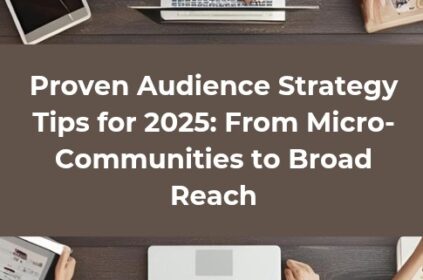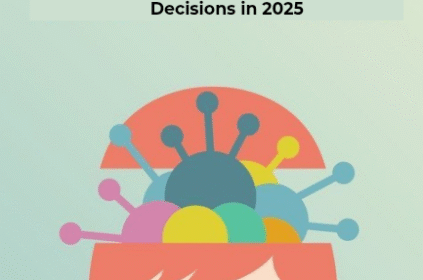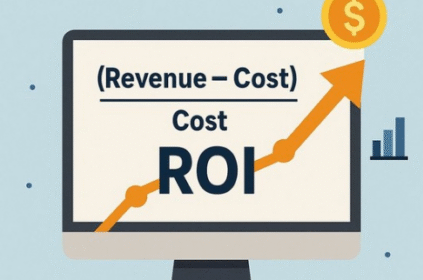Did you know that 77% of marketers use Facebook ads to increase their reach and grow their brand? (Source: WEBFX). Facebook is the world’s most widely used social network, with over 3 billion active members each month. As a result, marketers operating on both the B2B and B2C spectrum continue to view the market leader as the most significant social media platform. (Source: Statista)
As an experienced digital marketer, I’ve been asked a lot of questions concerning making real sales with Facebook ads. Making successful Facebook ad campaigns is something that many companies are keen to do to optimize their return on investment (ROI).
I will give you 10 professional strategies in this in-depth article to help you create Facebook ads that not only grab attention but also provide noticeable results. You will be well-equipped to maximize your campaigns and meet your sales targets if you adhere to these tactics.
Is Facebook Advertising Worth It?

The quick answer is that running Facebook ads could potentially be worthwhile. However, several variables, such as your target market, advertising budget, campaign objectives, and the quality of your ads, affect how effective Facebook advertising is. Facebook ads can be a wise investment for the following reasons:
#1. Precise Targeting
With Facebook’s extensive targeting capabilities, you can target particular demographics, hobbies, behaviors, or even create bespoke audiences with your audience. This accuracy makes sure that the individuals who are most likely to be interested in your goods or services see your advertisements, which raises the likelihood that they will be converted.
#2. Measurable Outcomes
Facebook’s Ads Manager offers in-depth statistics and insights on the effectiveness of your ads. To find out how successful your campaigns are, you may monitor metrics like clicks, impressions, conversions, and cost per acquisition (CPA). You may tweak your advertisements for better results and make well-informed decisions with this data-driven method.
#3. Cost-Effective
You have control over your budget using Facebook advertising’s range of pricing methods, which include cost per click (CPC) and cost per impression (CPM). Budgets can be created for the day or the lifetime and changed as necessary. Because of its adaptability, Facebook advertising is available to companies of various kinds.
#4. Versatility:
There are many different ad styles available on Facebook, including carousel advertisements, video ads, feed ads, and story ads. Additionally, you have a variety of targets to select from, including lead generation, clicks, conversions, reach, and brand recognition. Because of its adaptability, you may customize your campaigns to your target demographic and unique goals.
#5. Customer Engagement:
Facebook gives you the chance to connect with your customers, develop a community, and get their input. You may use messages, shares, likes, remarks, and comments to promote brand involvement. Through this interaction, you may better understand the wants and requirements of your clients, enhance your offerings, and foster client loyalty.
#7. Integration with Other Platforms:
Facebook easily connects with other apps, including Messenger and Instagram. This enables you to use your current audience to your advantage and offer customer service on a single platform. To obtain a comprehensive view of your marketing endeavors, you may also monitor conversions through various channels.
#8. Retargeting and Remarketing:
You may connect with customers who have expressed interest in your goods or services but haven’t bought them yet by using Facebook’s retargeting and remarketing tools. You may boost your ROI and enhance your chances of conversion by displaying them with appropriate adverts.
#9. A/B Testing:
You may try out several ad versions with A/B testing to see which ones work better. You may determine the most successful combinations and maximize the effectiveness of your ads by testing various components, including headlines, pictures, and calls to action.
#10. Brand Recognition and Reach:
Facebook advertising is an effective way to reach new consumers and build brand recognition. You can make Facebook ads that highlight the distinctive value proposition of your company and target audiences most likely to be interested in your goods or services.
#11. Lead Generation:

Advertising on Facebook is a fantastic method to produce leads for your company. You may make advertisements that entice viewers to download a freebie, join your email list, or book a consultation.
#12. Website Traffic:
Facebook ads can drive traffic to your website, where you can convert visitors into customers. You can promote your website’s landing pages, blog posts, or online store.
However, it’s important to note that Facebook ads require careful planning and execution. To maximize your ROI, focus on creating high-quality ads, targeting the right audience, and continuously optimizing your campaigns based on performance data.
Top 10 Tips to Create Effective Facebook Ads in Generating Actual Sales
#1: Define Your Target Audience

It’s critical to understand your ideal client while making Facebook advertisements. You may customize your messaging and images to appeal to the unique requirements and interests of your target audience by precisely describing them.
Make use of Facebook’s extensive targeting capabilities to target the exact audience you want to reach. Take into account elements like:
1. Demographics: age, gender, place of residence, marital status, level of education, and occupation.
2. Interests: pastimes, pursuits, websites favored, and events participated in.
3. Behaviors: Online activity, past purchases, and personalized audiences.
You may construct highly relevant ad campaigns with a higher conversion rate by combining these targeting factors.
#2. Create Compelling Ad Copy
The core of your Facebook advertisement is your ad wording. It’s what draws people in, communicates your message, and motivates them to act. Here are some important factors to think about:
1. Powerful Headlines: Create compelling headlines that express your product or service’s value proposition in an understandable manner.
2. Unambiguous Calls to Action: Whether the goal is for people to visit your website, make a purchase, or sign up for a subscription, utilize compelling calls to action (CTAs) to direct them toward the intended result.
3. Narrative: Use narrative techniques to engage your audience on an emotional level and provide an unforgettable experience.
Keep in mind that the content of your Facebook ads should be interesting, succinct, and relevant to the interests of your target market.
#3: Utilize High-Quality Visuals
To properly grab readers’ attention and communicate your message, visuals are essential. Select top-notch pictures or videos that are pertinent to your offering. Take into account these suggestions:
1. Relevance: Make sure the images in your advertisement are pertinent to the subject matter and intended audience.
2. Clarity: Make use of easily understood photographs or movies that are bright and clear.
3. Eye-Catching Design: Produce designs that are striking to look at and differentiate yourself from the competition.
Try experimenting with several visual formats to see which ones your audience responds to the most. Carousels, for instance, can highlight several features or items, whereas films might convey a narrative or show off a product in use.
#4: Optimize Your Landing Page
Optimizing your landing page is essential to converting people into paying customers. Make sure the information on your landing page provides a seamless user experience and is in line with the advertisement. The following are some crucial points to consider:
1. Brief and Unambiguous Messaging: Clearly articulate the benefits and value that you provide.
2. Strong Call to Action: Make sure that visitors are drawn to and understand your call to action.
3. Fast Loading Times: To prevent visitors from abandoning, have your landing page load as quickly as feasible.
4. Mobile-Friendly Design: Ensure that your landing page is responsive and looks well across all platforms.
By making your landing page better, you may increase conversions and your return on investment.
#5: A/B Testing for Continuous Improvement
Finding the components of your Facebook ads that work best is made easier with the help of A/B testing. You may improve your campaigns by generating two copies of an advertisement and evaluating their effectiveness to make data-driven decisions.
Think about putting the following components to the test:
1. Ad copy: Try out several headlines, calls to action, and wording.
2. Visuals: Evaluate the impact of various pictures or movies.
3. Targeting: Determine which audience segments are the most receptive by testing them.
4. Landing pages: Experiment with various layouts and styles.
Examine the outcomes of your A/B testing to see which variants are winning, then modify your ads accordingly. You may consistently enhance the performance of your ads and meet your sales targets with the aid of this continuous procedure.
#6: Leverage Facebook’s Pixel for Tracking and Retargeting
With the help of the Facebook Pixel, a potent tracking tool, you can quantify conversions and build unique audiences for remarketing. You may monitor user activity and determine who has expressed interest in your goods or services by adding the Pixel to your website.
Utilize the Pixel for:
1. Track Conversions: Keep tabs on website visits, purchases, and other desired activities to gauge the success of your advertisements.
2. Establish Custom Audiences: Focus on people who have come to your website or done particular activities, such as reading product pages or putting products in their basket.
3. Retargeting: Get in touch with those who have expressed interest in your goods or services but haven’t bought anything yet.
By effectively utilizing the Facebook Pixel, you can personalize your ad targeting and increase your chances of converting leads into customers.
#7: Consider Facebook’s Ad Formats and Objectives
Facebook provides a range of ad formats, each with special benefits of its own. Select the format that best fits your intended audience and aims. Here are a few well-liked choices:
1. Feed Ads: These might be pictures, videos, or carousels that show up in the news feed.
2. Stories Ads: These might be full-screen photos or videos that show up in the Stories section.
3. Video advertisements: These can be used to convey stories, show off products, or raise brand recognition.
4. Carousel Ads: Display several pictures or videos in a single advertisement.
Considering the objectives of your campaign, choose the right ad target. Typical goals consist of:
1. Clicks: Encourage visitors to visit your landing page or website.
2. Conversions: Inspire visitors to do a certain task, like buying something or subscribing to a newsletter.
3. Reach: Boost exposure and brand recognition.
4. Engagement: Inspire viewers to take action on your advertisement by sharing, liking, and commenting.
You may modify your campaigns to get the desired effects by carefully evaluating the goals and ad types.
#8: Stay Updated with Facebook’s Algorithm Changes
The algorithm used by Facebook is always changing. Keeping up with the most recent developments and trends is crucial to guaranteeing the continued efficacy of your advertisements.
Ad performance can be affected by algorithm modifications in several ways, such as:
1. Ad visibility: Modifications to the algorithm may have an impact on how frequently consumers see your advertising in their news feeds.
2. Options for targeting: Adding new features or modifying current ones may affect your capacity to connect with your intended audience.
3. Ad formats: Over time, the efficacy of various ad forms may vary.
Participate in online groups, webinars, and industry news to stay informed about changes to Facebook’s algorithm. You may preserve the best possible ad performance by modifying your methods in light of these changes.
#9: Monitor and Analyze Your Ad Performance
Regular monitoring and analysis of your ad performance is essential for identifying areas for improvement. Use Facebook’s Ads Manager to track key metrics, such as:
1. Clicks: The number of times your ad has been clicked.
2. Impressions: The number of times your ad has been shown to users.
3. Click-through rate (CTR): The percentage of impressions that result in clicks.
4. Conversions: The number of times users have taken a desired action, such as making a purchase or signing up for a newsletter.
5. Cost per click (CPC): The average cost of each click on your ad.
6. Cost per conversion (CPC): The average cost of each conversion.
Analyze your data to identify trends and insights. Look for patterns in performance, such as which ad formats or targeting options are most effective. Use this information to make data-driven decisions and optimize your campaigns.
#10: Optimize for Mobile
Facebook advertising must be optimized for mobile viewing due to the growing prevalence of mobile devices. Make sure your advertisements are easy to see and interact with on tiny displays.
Take into account these suggestions:
1. Make use of mobile-friendly visuals: Select photographs and movies that fit the screen size of mobile devices.
2. Keep it simple: Steer clear of clutter and use succinct ad language.
3. Ensure quick load times: Make your landing pages mobile-friendly to prevent visitors from leaving because of sluggish load times.
4. Test on mobile devices: Check that your ads appear appropriately by previewing them on mobile devices.
You may increase your overall performance and reach a larger audience by making your advertising mobile-friendly.
Conclusion
By adhering to these ten professional techniques, you can make successful Facebook ads that increase sales and optimize your return on investment. Don’t forget to specify who your target market is, write ad language that grabs their attention, use eye-catching images, optimize your landing page, and test and analyze your campaigns often.
Keep abreast of changes to Facebook’s algorithm, make use of the Facebook Pixel’s capabilities, test out various ad forms and goals, and make sure your mobile advertisements are optimized. By implementing these tactics into your strategy, you’ll put yourself in a strong position to meet your sales targets and prevail in the cut-throat field of Facebook advertising.










